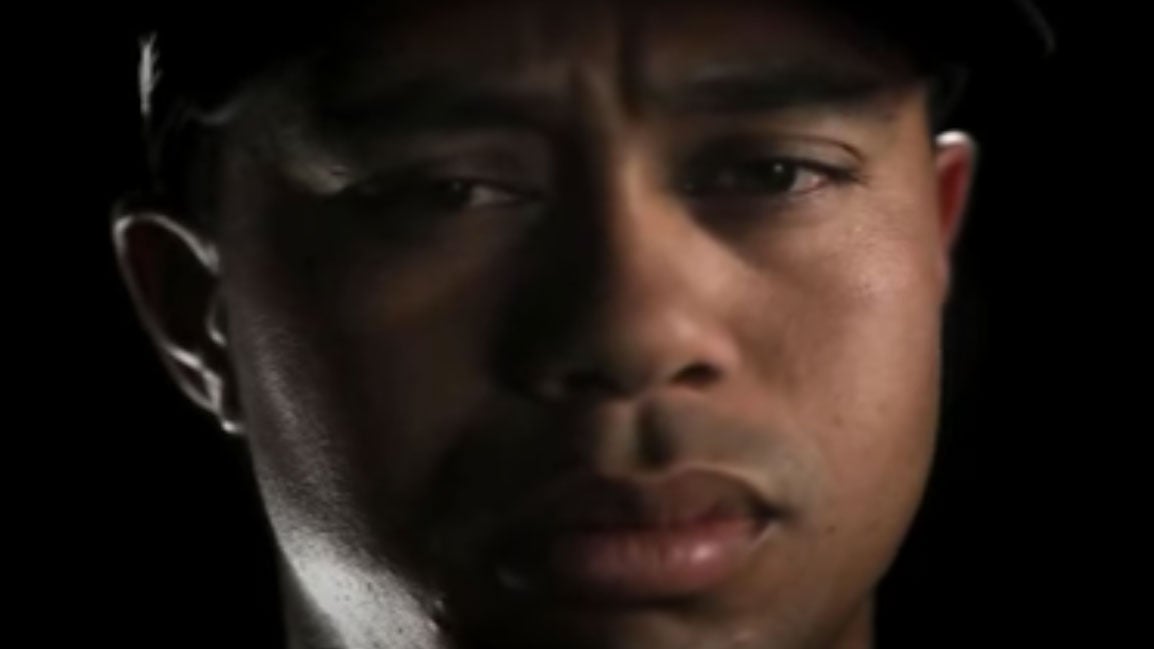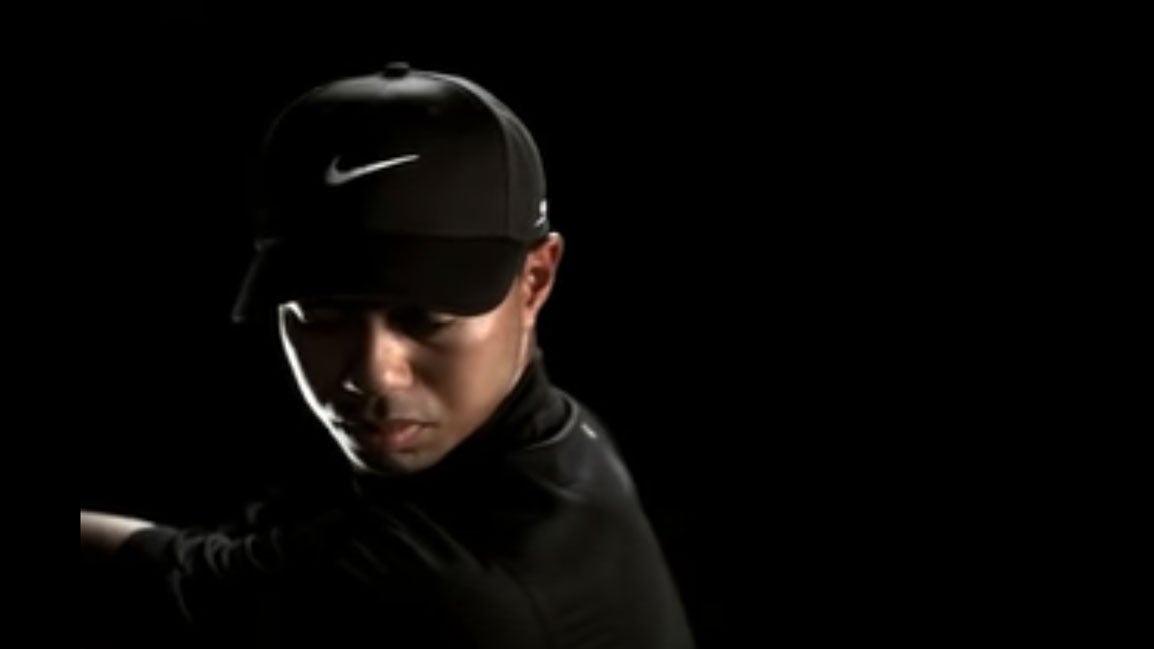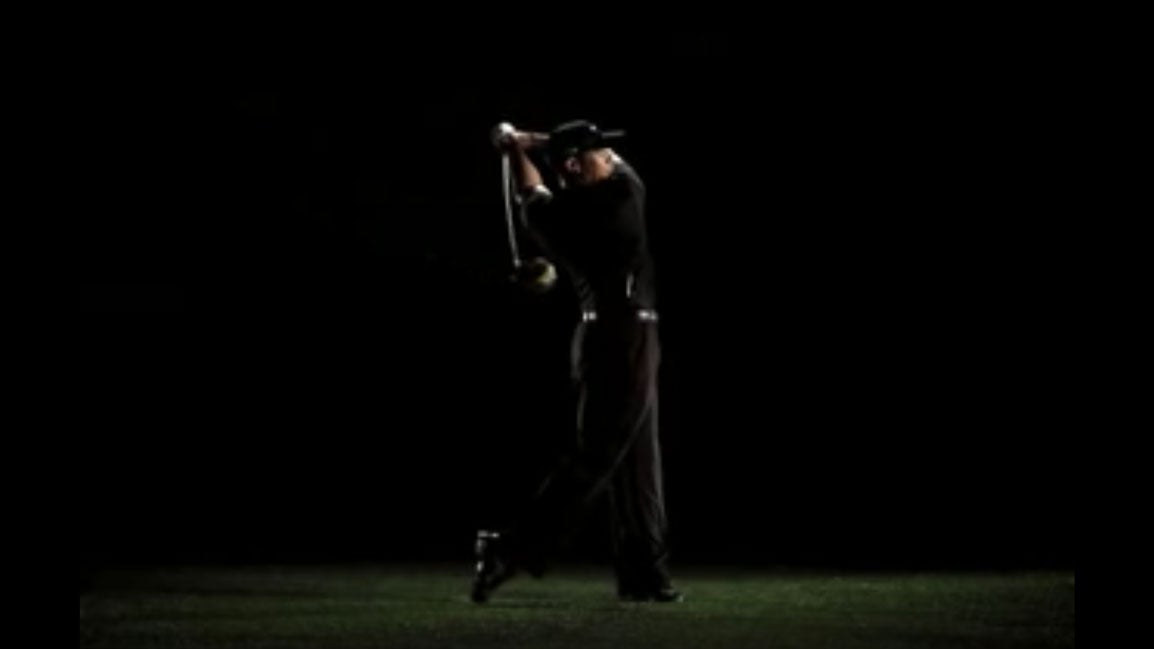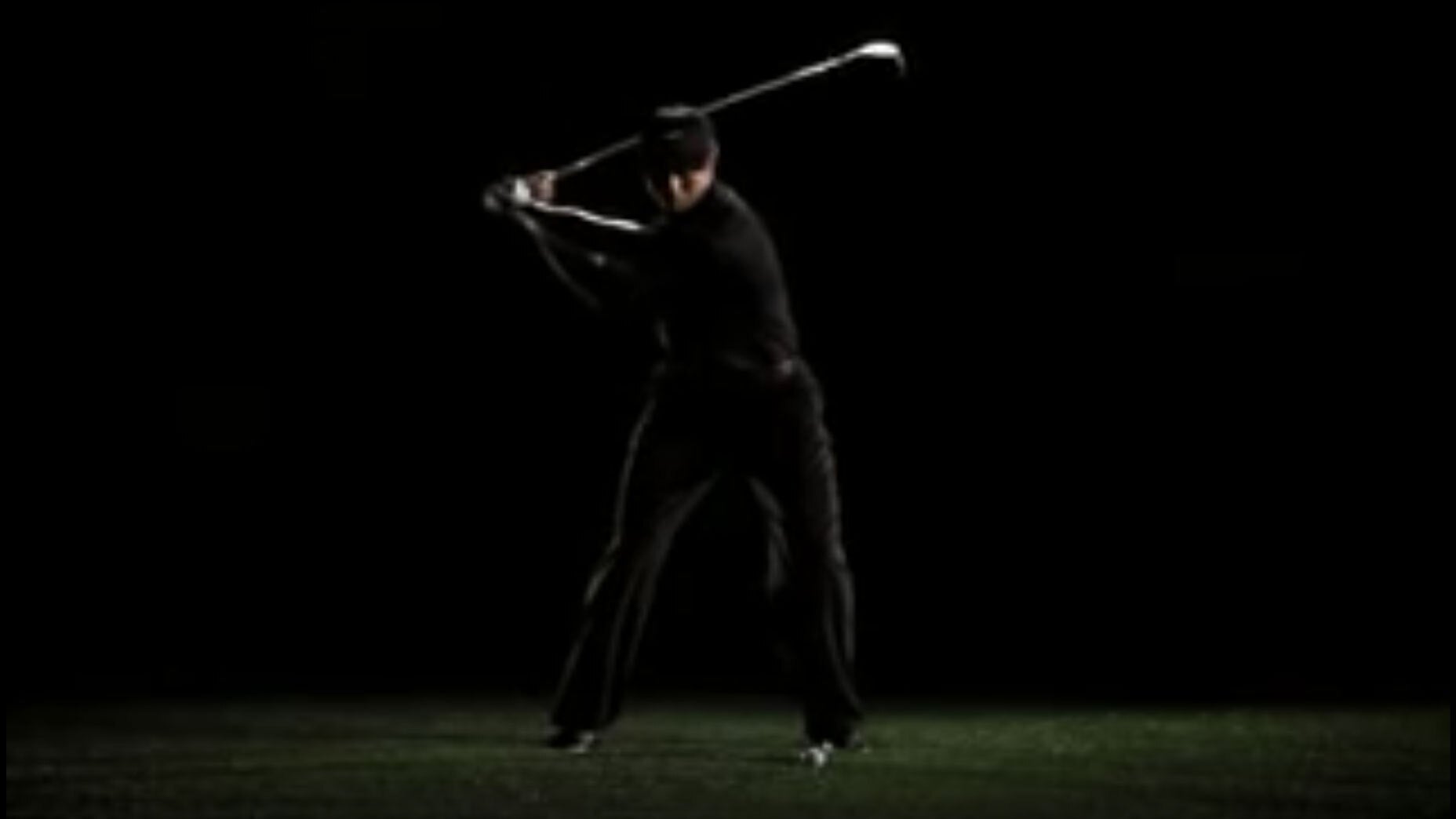At the very basis of the Tiger Woods YouTube Project is the fact that people like you and me have flocked for over a decade to watch Tiger Woods hit golf balls. For other reasons, too — reasons that we have and will continue to cover in this space — but a lot of it is that simple. Tiger Woods’ golf swing. Dreamers have turned to YouTube in hopes of imitating the perfection of Woods’ swing from different eras. Woods himself has talked about looking at old swings, looking to recapture different bits of magic. (Tiger, if you’re reading, welcome back.)
This week we’re taking that simple idea — wanting to watch Woods’ swing — and diving in. In short, Nike realized y’all had that same instinct, and they turned it into a commercial in 2006. It’s a bold ad. The lighting. The music. The minimalism! Let’s check it out.
Tiger Woods YouTube Project, Chapter 23: The Swing Portrait
Chapter 22: What I’d never noticed about The Chip
First, the video:
Instruction editor Luke Kerr-Dineen is here to guide us through the ad and what it meant to the world of the golf swing.
DYLAN DETHIER: Okay, Luke. Take me back to 2006. Where was golf instruction at this point from a technological perspective? Did everyone have photos and videos of their swings?
LUKE KERR-DINEEN, instruction editor (@LukeKerrDineen): Golf instructors teach towards the best technology that’s widely available at the time. That’s all they can do, really — how would you feel if your doctor told you he wasn’t consulting the latest science or using the newest technology?
But in 2006, during Tiger’s second wave of dominance, that means the industry was in peak 2D mode. Every big teacher had a video camera, every student who took lessons knew what his or her swing looked like on video, and a lot of the stuff golfers were working on was based on things specifically designed for cameras to measure, like being “on plane.” Golfers increasingly had access to video of their own swing (spurred on further by the iPhone’s release a year after this commercial) and prize video footage of the best players was in huge demand.
DETHIER: I feel like “seeing your swing” as part of a lesson took longer to come to small-town rural Massachusetts but I do remember setting up the ole camcorder in the backyard at home. Still a far cry from the instant feedback of the iPhone era, though. Anyway, what made this commercial such a big deal?
KERR-DINEEN: The context matters — not just around the way golf was taught, but around Tiger himself.
Tiger was dominating the game in a way that even he never had before. Between 1999 and 2002 Tiger’s supreme athleticism had made him seemingly unstoppable, but in a borderline one-dimensional way. That’s not a slight to Tiger; it’s more a credit to how incredibly dominant he was off the tee, which sometimes de-emphasized how good the rest of his game was. How could Tiger not win when he was hitting pitching wedge into a green when his opponents were hitting 7-irons? Tiger, like all great innovators, broke the system, and it took a while for others to catch up. It’s what created such a sense of urgency around Tiger-proofing golf courses, which probably didn’t work anyway.
Anyways, fast-forward to 2006. Tiger had changed his swing and his game. He was more consistent now, more refined, but just as dominant. More so, even — his win percentage was higher. In 2006 he won the Open Championship without hitting a driver all week. In 2007 he put together the second-longest win streak in PGA Tour history. He had reassembled his golf swing and come out the other side even better.
Then this commercial came out. We’d seen plenty of Woods commercials focused on his humor, his cultural significance, his personality or his driving range tricks. But this focused on one thing only: the work of art that was his golf swing.

DETHIER: It’s crucial that the first shot is a close-up on Woods’ face. This is a commercial about Woods. It’s a portrait of someone who has mastered his craft. It’s powerful, it’s smooth, it’s detail-oriented. I’m curious: What effect did this have on Young Luke at the time?
KERR-DINEEN: Like many of my peers at the International Junior Golf Academy, where I went to high school, it reinforced what (in retrospect) was probably the dark side of a video camera-centric era in golf swing history. It emphasized that the secret to golf was perfecting your golf swing. That you needed to strip out each and every unique quirk within your swing and follow the model, because the model is perfect. Follow Tiger. Tiger was Tiger because he had the perfect golf swing; perfect enough to make an entire commercial about only that. Take a good look. Study it, copy it, and always follow the model.

DETHIER: It’s striking to me that Tiger’s swing is actually so perfect that it can be used in a commercial like this, as if to say: This is it. This is the prototype. Not only is this the peak ideal for a golf swing, this is also a real person, the best golfer in the world, and he is making that swing. Truly the Vitruvian Golf Swing. It’s perfection! They’re selling perfection! And it’s brilliant. I’m curious: what do you FEEL watching this commercial? How ‘bout that music?
KERR-DINEEN: I truly believe this is the best golf commercial ever, and something only a brand like Nike would dare attempt. The reason it’s so good is that it doesn’t work hard — it’s hardly working at all. It’s not ostensibly telling you a story or shilling a product. It doesn’t try to make you laugh or cry. It’s completely stripped down, minimalist to the extreme. It forces you to confront Tiger’s golf swing in its entirety — to look it in the face. At its essence, the commercial is true. Don Draper would be proud.
The gear-up sound leading into the classical music is the golden touch. It’s crescendoing up, but at the moment you think there’s going to be some marvelous explosion, it goes silent for a split-second then re-emerges with a beautiful music, a gentle awakening. There’s no flash, bang, wallop. It’s like you’re opening your eyes in the morning, and letting them adjust to the light.
DETHIER: I think that’s right — the climax isn’t an action sequence or a punch line, it’s a bit of poetry. The music reminds us that the swing IS the main event. It’s a swing with almost unfathomable power and significance. So it’s a swing, but it’s obviously representative of everything else about Woods. Did this commercial change the way we think about the golf swing? If so, how?
KERR-DINEEN: It’s hard to know for sure, but my impression is that it did. At the very least, it changed a certain corner of the golf world. When you take a golf swing — just a golf swing, and almost nothing else — and put it front and center in a nationwide commercial like this, it forces a certain message into the public consciousness where it may not have otherwise existed. Inevitably, it led people to conclude that this must be the perfect golf swing, which helped lionize Tiger Woods’ image even further.

DETHIER: To me it signifies that blend of technology and feel that defines the modern golf swing. The music on his takeaway is reminiscent of an airplane taking off, but in his transition there’s a shift to a sweet symphony. Part machine, part art. Any other images you’d like to leave us with?
KERR-DINEEN: Cutting to the clubhead at impact for just a moment at impact is a masterstroke. Also, notice how the tee flips into the air and stays, spinning, for an awfully long time. It might be the only hint of special effects used in this ad. Or it might be wholly organic.
For more Tiger Woods YouTube Project check out Ch. 22: The Chip.











